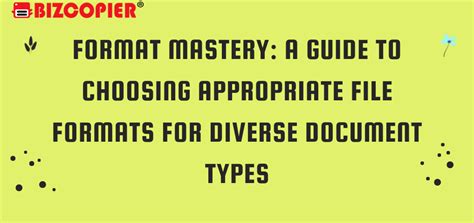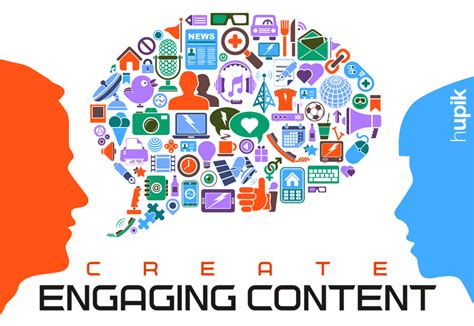As content creators, one of our primary concerns is to develop compelling and impactful materials that resonate with our target audience. Crafting content that not only grabs attention but also captivates and engages readers is a delicate art that requires skill, strategy, and an understanding of the ever-evolving landscape of digital media.
It is crucial to appreciate that in today's fast-paced world, where information overload is the norm, merely producing a well-written piece of content is not enough. To truly stand out and make a lasting impression, we need to approach content creation with creativity, originality, and a deep understanding of our audience's needs and desires.
Enter the art of storytelling.
Storytelling has been an integral part of human history, captivating audiences for centuries. Incorporating storytelling techniques into our content creation process allows us to convey information in a more relatable and memorable manner. By weaving a narrative that sparks emotions, creates connections, and offers valuable insights, we can forge a stronger bond with our readers and ignite their curiosity.
But how can we effectively implement storytelling into our content creation strategy?
Understanding Your Target Audience

In order to create compelling and impactful content, it is crucial to have a deep understanding of your target audience. By comprehending the individuals you are trying to reach, you can tailor your content in a way that resonates with them and effectively communicates your message.
Identifying Your Target Audience:
Before embarking on any content creation journey, it is important to identify and define your target audience. This involves examining various demographic factors such as age, gender, location, and income level. Additionally, you should delve into their psychographic characteristics such as interests, values, beliefs, and motivations. Understanding these key aspects will help you in crafting targeted and relevant content.
Gaining Insights:
Obtaining insights about your target audience can be achieved through numerous methods. Conducting surveys, interviews, and focus groups can provide valuable information about their preferences, needs, and pain points. Utilizing analytics tools and social media platforms can also provide you with data regarding their behaviors, engagement, and interests. Remember, the better you understand your audience, the more effective your content will be.
Creating Personas:
A useful strategy for comprehending your target audience is by creating personas. Personas are fictional representations of your ideal customers, allowing you to humanize and empathize with them. By visualizing their characteristics, preferences, and challenges, you can tailor your content to address their specific needs and desires.
Empathy-Driven Content:
To engage your target audience, it is essential to create content that resonates with them on an emotional level. By empathizing with their experiences, concerns, and aspirations, you can develop content that truly connects with them. Use storytelling techniques, authentic language, and relatable examples to establish a connection and establish trust.
Continuous Adaptation:
Understanding your target audience is an ongoing process. As time goes on, individuals change, trends evolve, and new technologies emerge. Therefore, it is important to continuously gather feedback, analyze data, and adjust your content strategy accordingly. Stay connected with your audience and strive to anticipate their ever-changing needs and preferences.
By thoroughly understanding your target audience, you can create content that not only captures their attention but also delivers value and drives meaningful engagement. Take the time to research, analyze, and adapt your content strategy, and you will see the positive impact it has on your audience and your overall content creation efforts.
Crafting an Engaging Headline
In the world of content creation, capturing the attention of your audience is paramount. One of the most crucial elements in achieving this is crafting a captivating headline. A well-crafted headline has the power to entice readers, spark curiosity, and compel them to click and explore further.
When it comes to creating a captivating headline, it's essential to consider several key factors. Firstly, it should be concise yet impactful, grabbing the reader's attention within a few words. Secondly, it should be relevant and align with the content of your article, ensuring that it accurately represents what readers can expect. Additionally, using strong and compelling language can help create a sense of urgency or excitement, making your headline more enticing.
Emphasize the value - Highlighting the benefits or solutions your article offers can make your headline even more appealing to potential readers. By focusing on what they stand to gain from reading your content, you can pique their interest and encourage them to delve further into the article.
Incorporate keywords - Including relevant keywords in your headline can improve your article's visibility in search engine results. By understanding the words or phrases that your target audience is likely to search for, you can optimize your headline to attract more organic traffic and increase your overall reach.
Create curiosity - Harnessing curiosity is a powerful strategy when it comes to crafting captivating headlines. Teasing intriguing or surprising information that readers can only discover by reading the article can engage their curiosity and encourage them to click in order to satisfy their curiosity.
Avoid clickbait - While it's important to create curiosity, it's equally crucial to avoid misleading or deceptive tactics commonly associated with clickbait headlines. It's important to maintain trust and provide valuable content that lives up to the expectations set by your headline.
In conclusion, a captivating headline can make a significant difference in attracting readers to your content. By carefully considering the impact, relevance, and value it offers, you can create a compelling headline that entices readers to explore further and ultimately increases the overall success of your content creation efforts.
Choosing the Appropriate Format

In the realm of creating impactful content, one crucial aspect is the selection of the most suitable format. Picking the right format for your content can greatly influence its effectiveness and reception by your target audience. By opting for the right format, you can enhance your content's ability to capture attention, convey key messages, and ultimately drive desired outcomes.
- 1. Understanding your audience's preferences: Before finalizing the format for your content, it is essential to gain a deep understanding of your target audience. Consider their demographics, interests, and consumption habits to determine the format that resonates with them the most.
- 2. Evaluating the nature of your message: Different formats excel at delivering various types of messages. Analyze the nature of your content - whether it is informative, promotional, educational, entertaining, or a combination of these. This assessment will aid in selecting the format that best aligns with your content's purpose and objectives.
- 3. Exploring diverse formats: The world of content creation offers a plethora of formats to choose from. Familiarize yourself with various options such as articles, blogs, videos, infographics, podcasts, webinars, ebooks, and social media posts. Each format possesses its own unique strengths and limitations, so explore multiple options to find the ideal fit for your specific content.
- 4. Analyzing platform requirements: Different platforms have specific requirements regarding content format. Whether it's a website, social media platform, or email marketing, consider the technical specifications and guidelines of each channel. Adhering to these requirements will ensure seamless integration and optimal display of your content, enhancing its reach and impact.
- 5. Consistency in branding and storytelling: While selecting a format, maintain consistency with your brand image and storytelling style. Ensure that your chosen format complements your overall brand identity, allowing for seamless brand recognition and reinforcing your messaging strategy.
- 6. Testing and analyzing results: Once you have created content in your chosen format, monitor its performance and gather feedback from your audience. Continuously test and evaluate the effectiveness of your chosen format, making necessary adjustments based on the insights gained.
Selecting the appropriate format for your content is a vital step in content creation. By considering your audience, message, platform requirements, and brand consistency, you can make informed choices that enhance the impact and effectiveness of your content.
Incorporating visuals and multimedia
Enhance the appeal and engagement of your content by creatively integrating visuals and multimedia elements. Rich and captivating visual content can effectively convey your message, boost audience retention, and make your content stand out from the crowd. By incorporating eye-catching images, videos, infographics, and animations, you can create a more immersive and interactive experience for your readers.
- Create visually compelling images that effortlessly communicate your ideas and concepts.
- Utilize videos to provide in-depth explanations, showcase products, or share testimonials.
- Enhance data-driven content with colorful and informative infographics.
- Add interactive elements such as quizzes, surveys, or polls to engage your audience.
- Incorporate animations and GIFs to bring your content to life and capture attention.
When incorporating visuals and multimedia, it is important to maintain a balance that complements your written content. Avoid using excessive visuals that may overwhelm or distract readers from the main message. Instead, strategically integrate visuals and multimedia elements that add value and enhance understanding. Remember to optimize your visuals for different devices and platforms to ensure compatibility and maximize reach. By incorporating visuals and multimedia effectively, you can create compelling and memorable content that resonates with your target audience.
Creating Engaging and Concise Content

In the fast-paced world of online content, it is essential to capture the attention of readers quickly and keep them engaged throughout. This section will explore the importance of conciseness and how to craft content that is compelling and impactful.
1. Be Clear and to the Point
When creating content, it is crucial to convey your message concisely. Avoid using unnecessary jargon or complex sentences that might confuse your audience. Instead, opt for simple, straightforward language that communicates your ideas clearly.
2. Use Engaging Headlines
A captivating headline can instantly grab the attention of your readers and entice them to continue reading. Consider using strong, action-oriented verbs or pose intriguing questions to intrigue your audience and make them curious about your content.
3. Provide Value Quickly
In today's information overload era, readers want to find value quickly. Start your content by presenting the most important information upfront, ensuring readers understand the value they will gain by reading further. This approach will help you retain their interest throughout the entire piece.
4. Utilize Visuals and Multimedia
Avoid overwhelming your audience with lengthy blocks of text. Incorporating visuals, such as images, infographics, or videos, can enhance your content's engagement by breaking up the text and providing additional visual stimuli.
5. Create a Connection
Engaging content establishes an emotional connection with the readers. Use storytelling techniques, personal anecdotes, or relatable examples to connect with your audience on a deeper level. This approach can significantly enhance their engagement and make your content more memorable.
6. Edit and Revise
Before publishing your content, take the time to edit and revise it carefully. Eliminate unnecessary words, sentences, and paragraphs that do not contribute to the main message. This process will help you maintain a concise and focused piece while ensuring your audience remains engaged from start to finish.
In conclusion, creating engaging and concise content is a fundamental aspect of effective content creation. By being clear and to the point, utilizing engaging headlines, providing value promptly, incorporating visuals, creating a connection, and editing meticulously, you can ensure your content captivates the audience and keeps them coming back for more.
Enhancing engagement with a compelling call to action
Increasing audience interaction and optimizing conversion rates are key objectives for any content creator. To achieve these goals, it is crucial to incorporate a clear and attention-grabbing call to action throughout your content. A well-crafted call to action prompts users to take a specific action, whether it's clicking a link, subscribing to a newsletter, or making a purchase. By strategically placing and designing these calls to action, creators can effectively guide their audience towards desired outcomes.
1. Capture attention with commanding words: Utilize strong and persuasive language in your call to action that compels users to take immediate action. For instance, instead of using generic phrases like "Learn more" or "Click here," opt for more compelling alternatives such as "Discover the secrets" or "Unlock exclusive content."
2. Create a sense of urgency: To motivate users to act promptly, incorporate time-sensitive language in your call to action. Phrases like "Limited time offer," "Act now," or "Don't miss out" convey a sense of urgency and encourage readers to take action without delay.
3. Use contrasting colors and sizes: Ensure that your call-to-action buttons or links stand out visually by using contrasting colors that attract attention. By selecting colors that differ from the rest of your content, you can lead the viewer's eye towards the call to action. Additionally, increasing the size of the call-to-action element can also make it more noticeable.
4. Provide clear direction and benefit: Be explicit in your call to action and clearly communicate the specific action users should take. Additionally, highlight the benefits or value that users will gain by following the call to action. By offering a compelling reason to act, you can increase engagement and encourage users to convert.
5. Test and optimize: Continually assess the effectiveness of your call-to-action strategies by conducting A/B testing. Experiment with different wording, designs, and placements to determine which methods generate the highest response rates. By analyzing and refining your call to action, you can enhance its effectiveness over time.
- Incorporate commanding language
- Create a sense of urgency
- Use contrasting colors and sizes
- Provide clear direction and benefit
- Test and optimize
By following these guidelines and adapting your call-to-action approach to suit your target audience, you can significantly improve the effectiveness of your content and increase user engagement and conversions.
FAQ
What are some practical tips for creating effective content?
There are several tips for creating effective content. Firstly, it is important to understand your target audience and tailor your content to their needs and interests. Additionally, conducting thorough research and using reliable sources will ensure that your content is accurate and informative. Using a clear and concise writing style, incorporating visual elements such as images and videos, and optimizing your content for SEO are also crucial for creating effective content.
How can I engage my audience through my content?
Engaging your audience is essential for effective content creation. One way to do this is by telling compelling stories that resonate with your readers. By appealing to their emotions and experiences, you can create a strong connection. Additionally, encouraging reader interaction through comments, social media sharing, or surveys can help keep your audience engaged. Finally, using a conversational and relatable tone in your writing will make your content more interesting and engaging.



